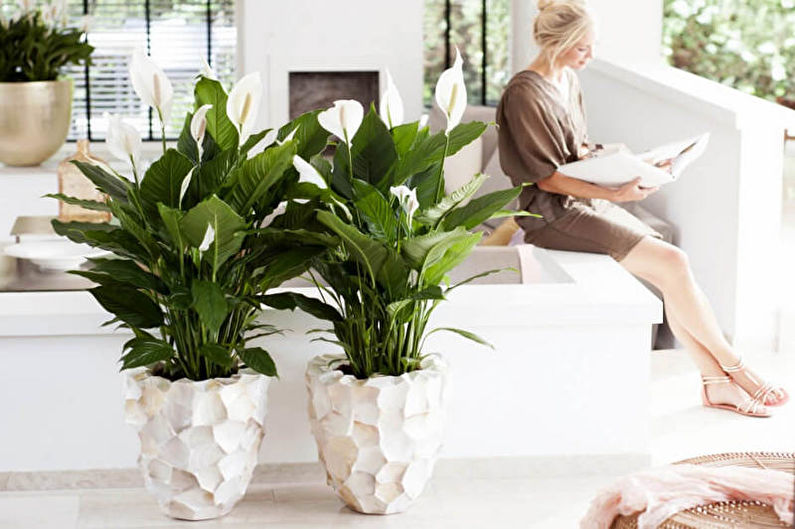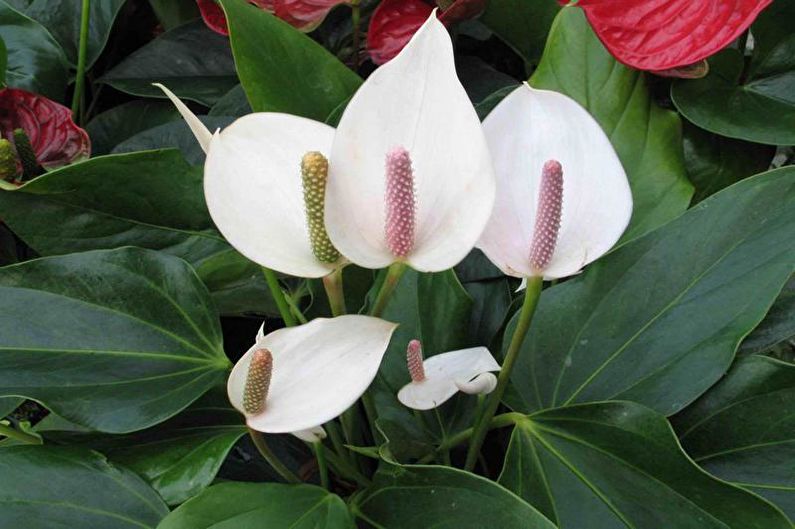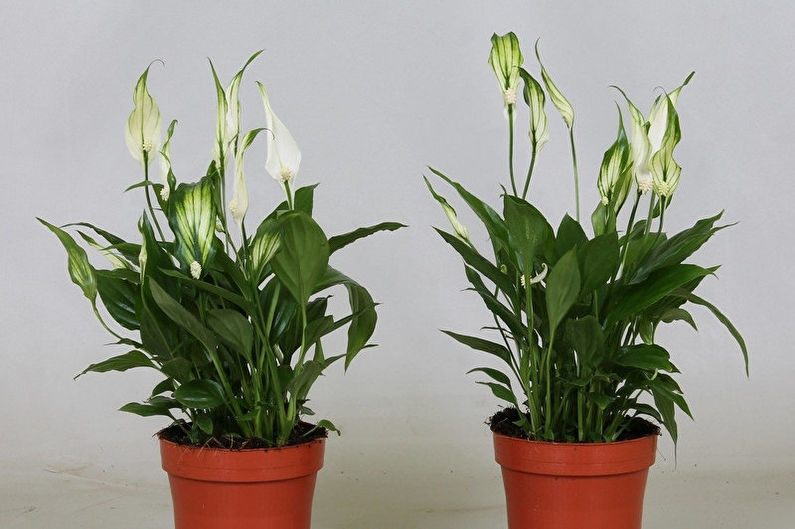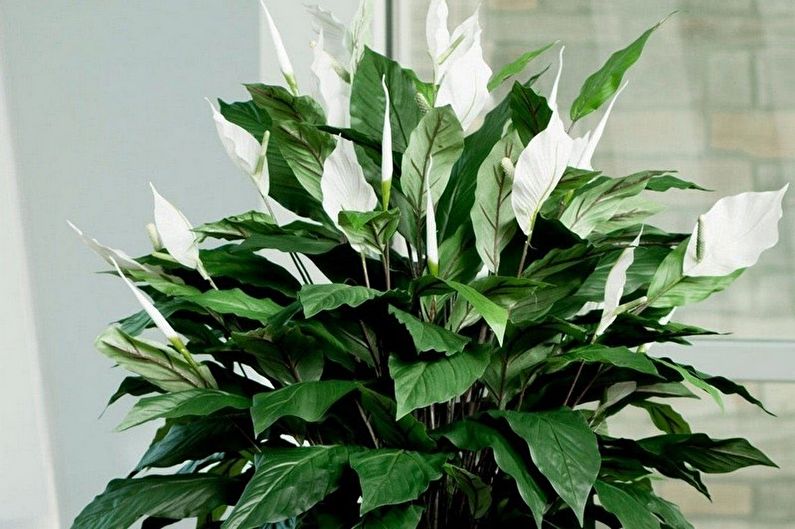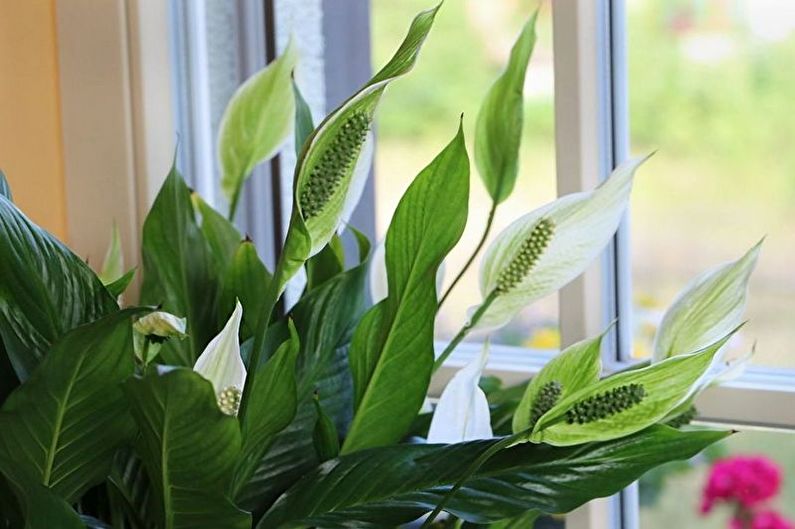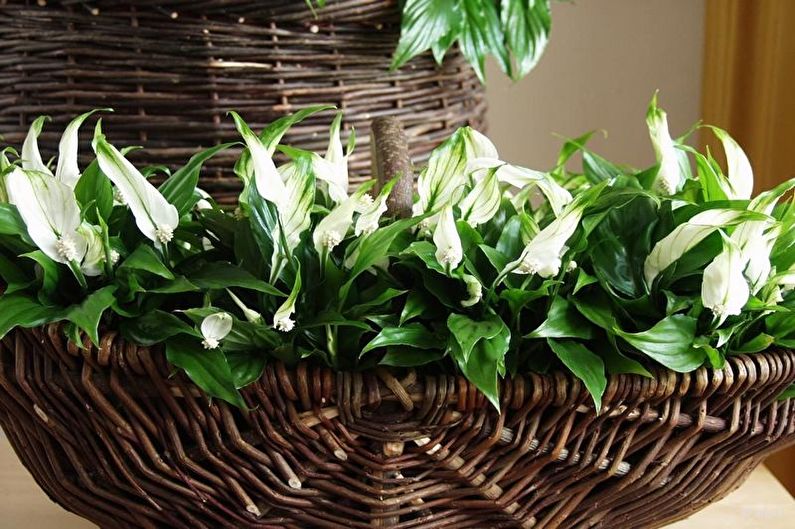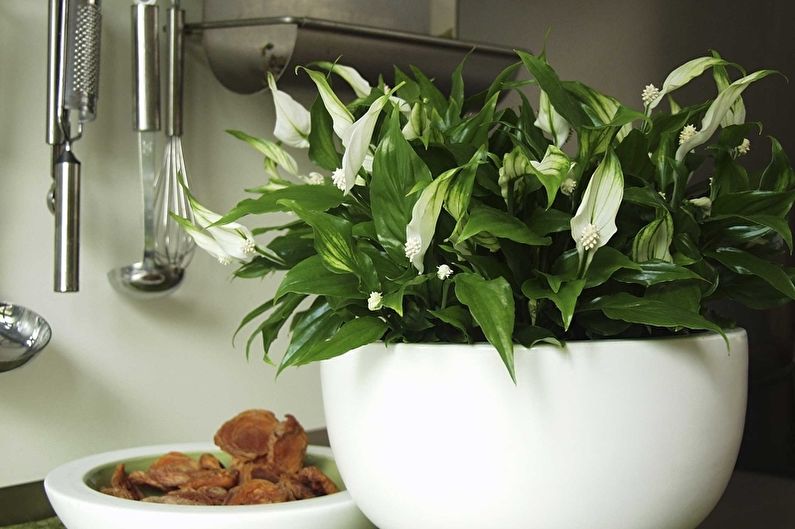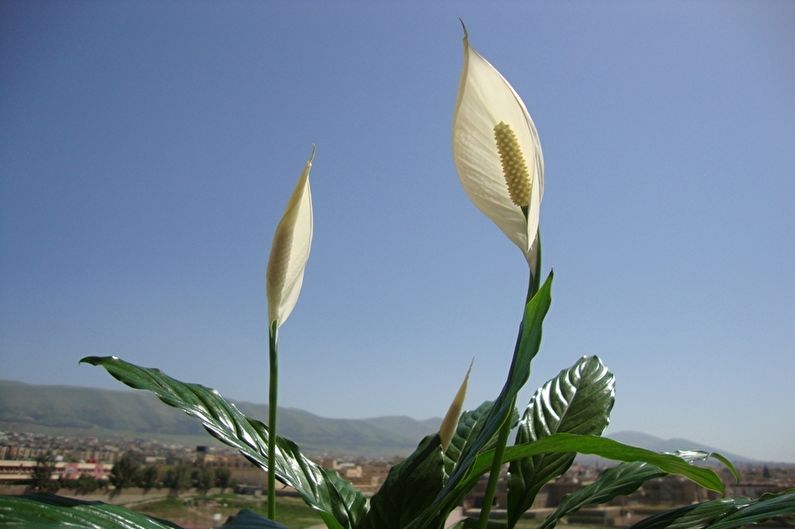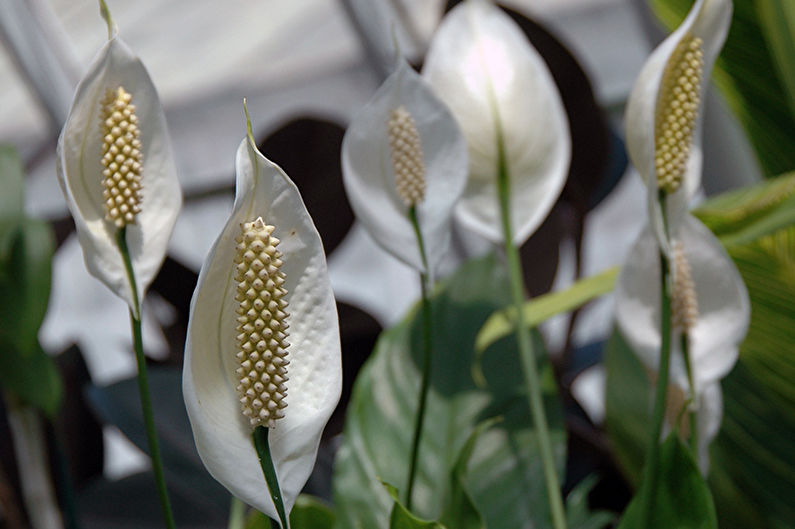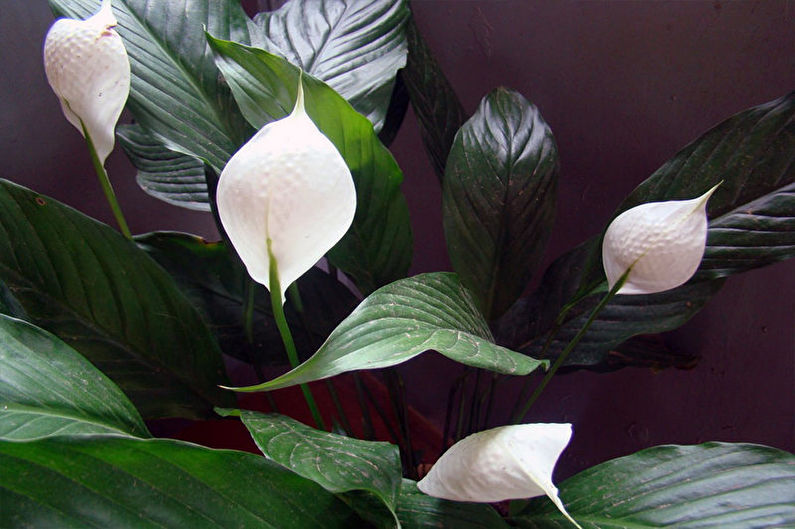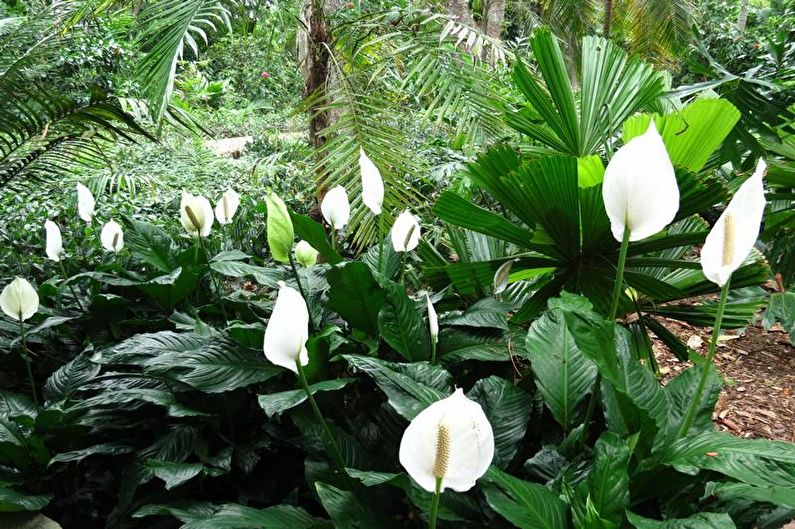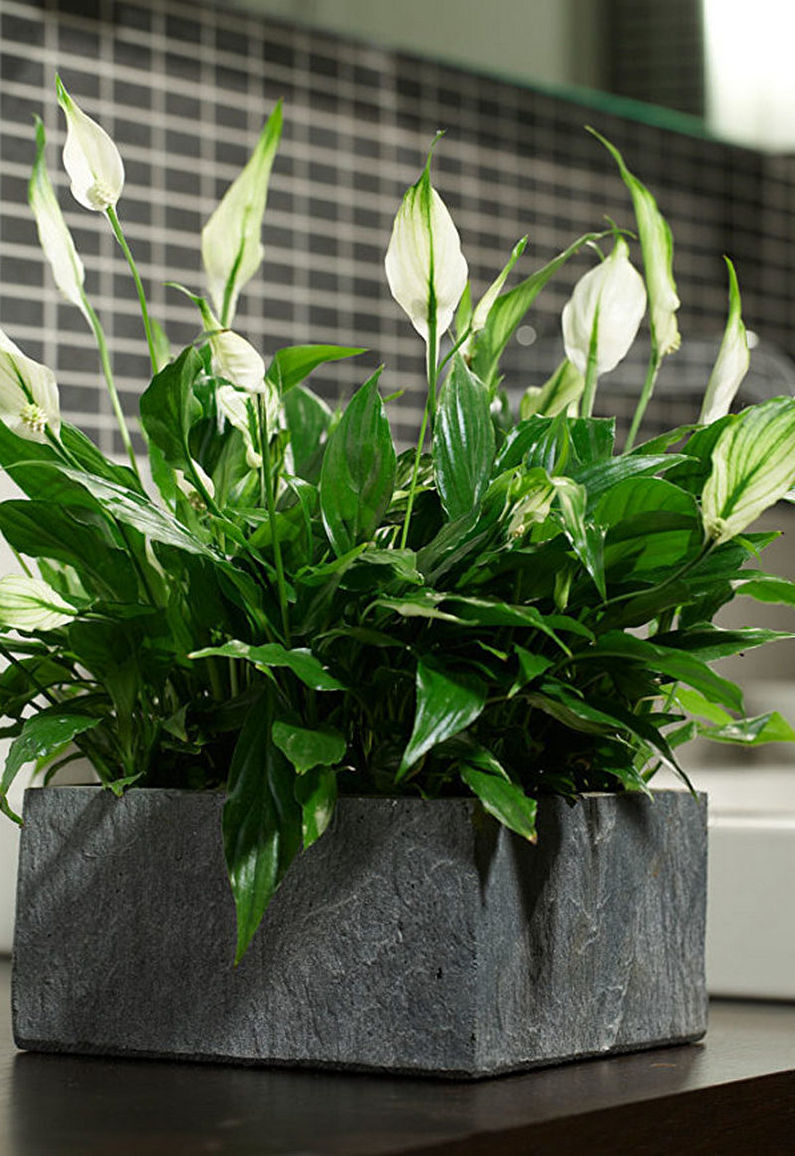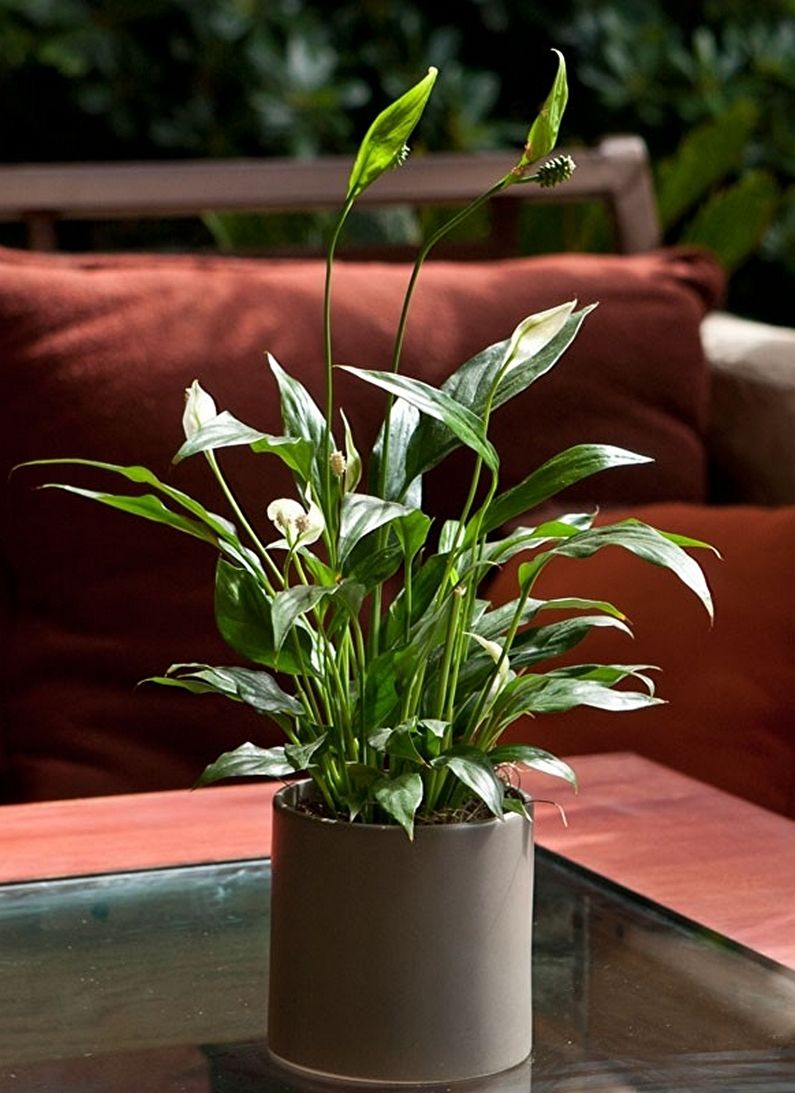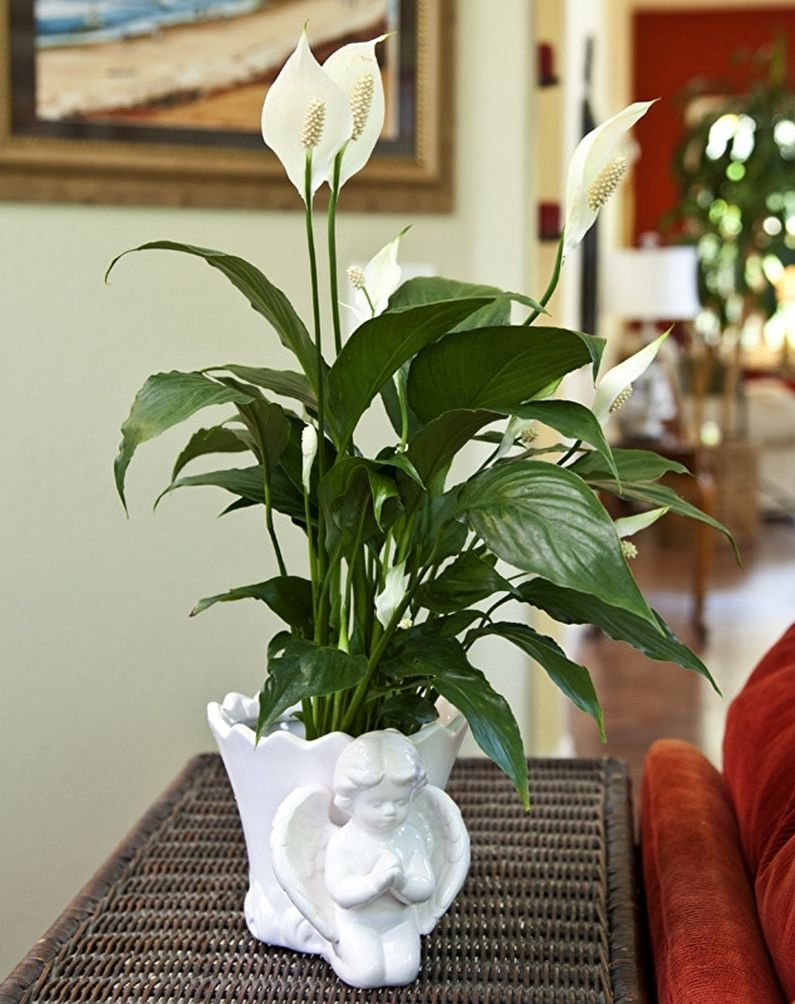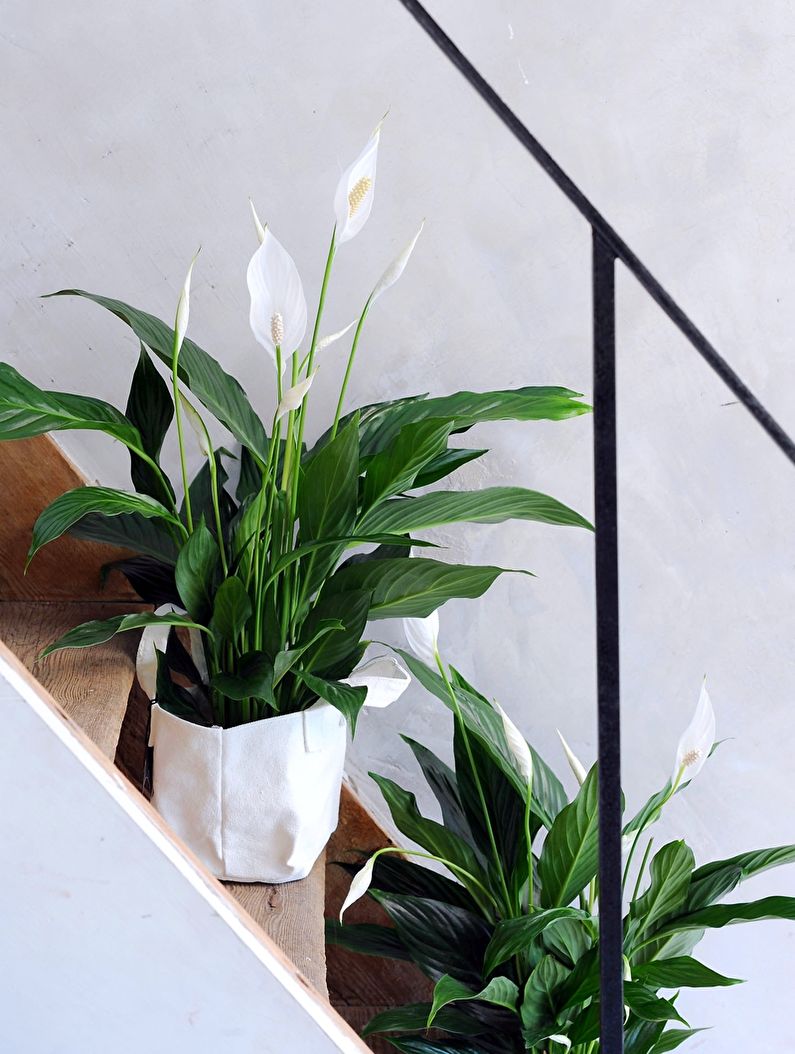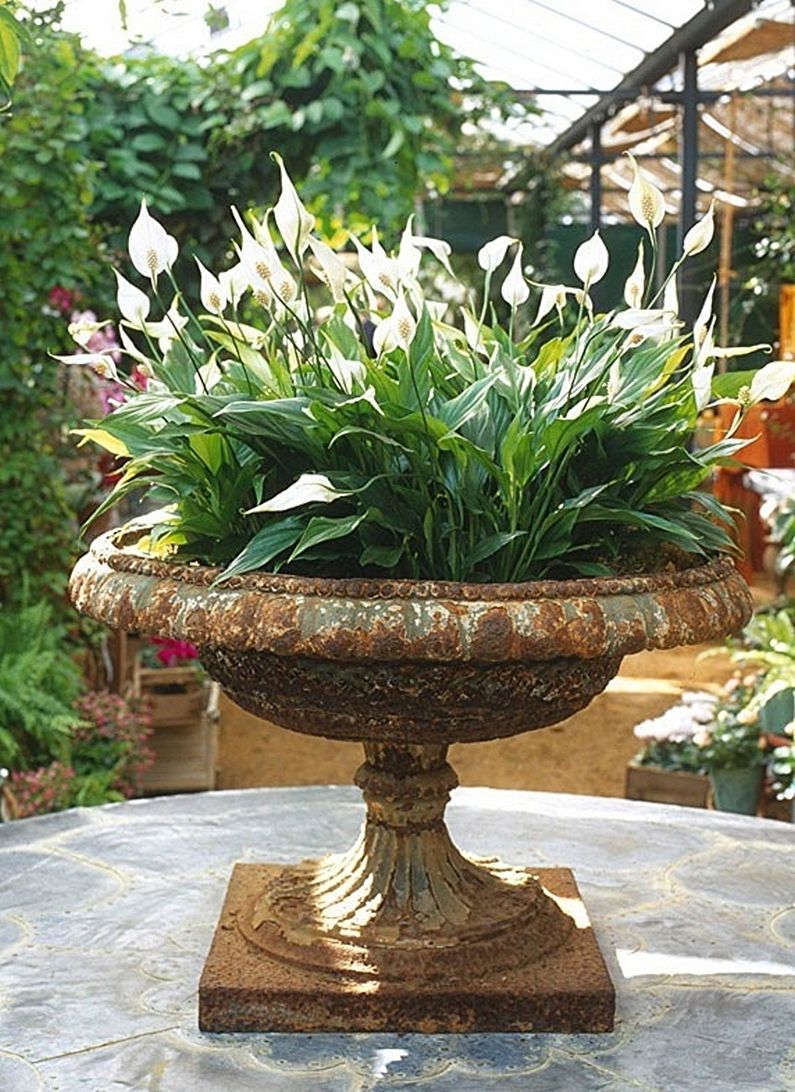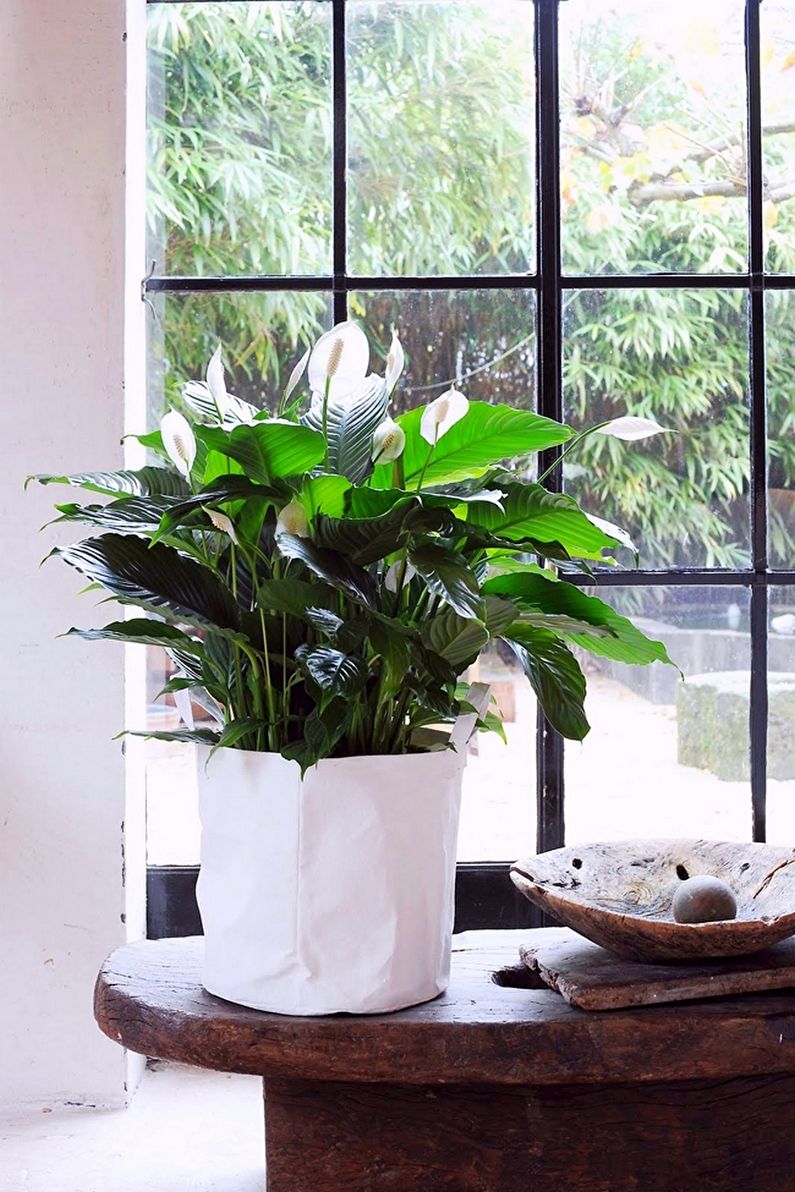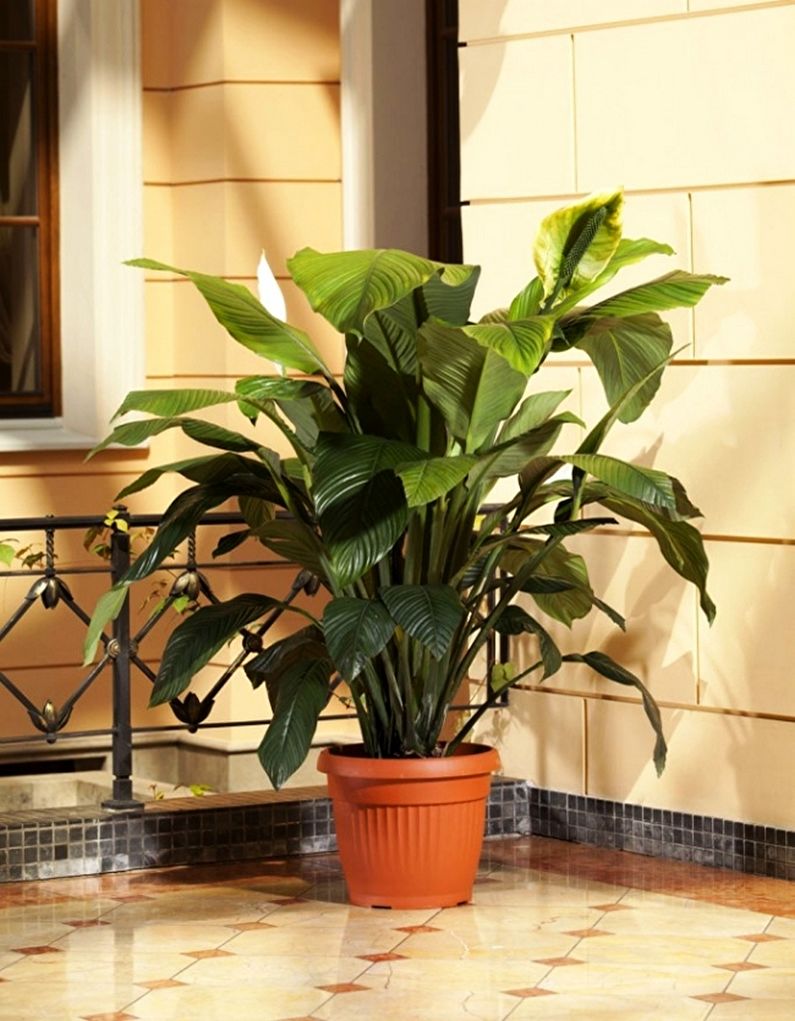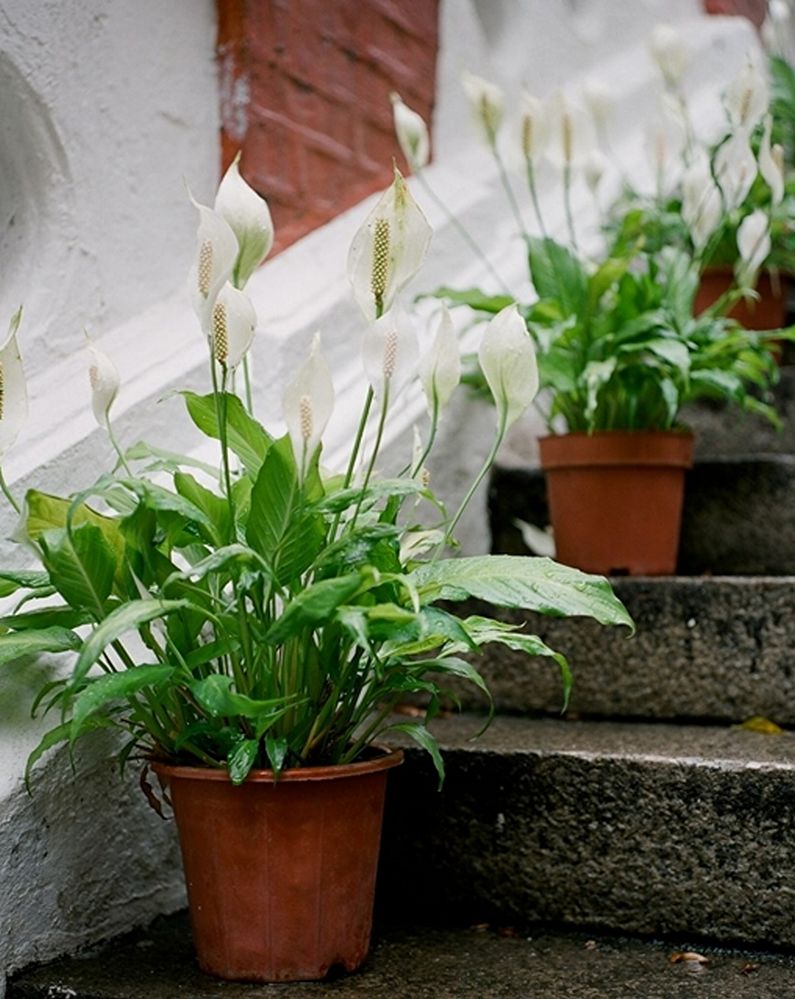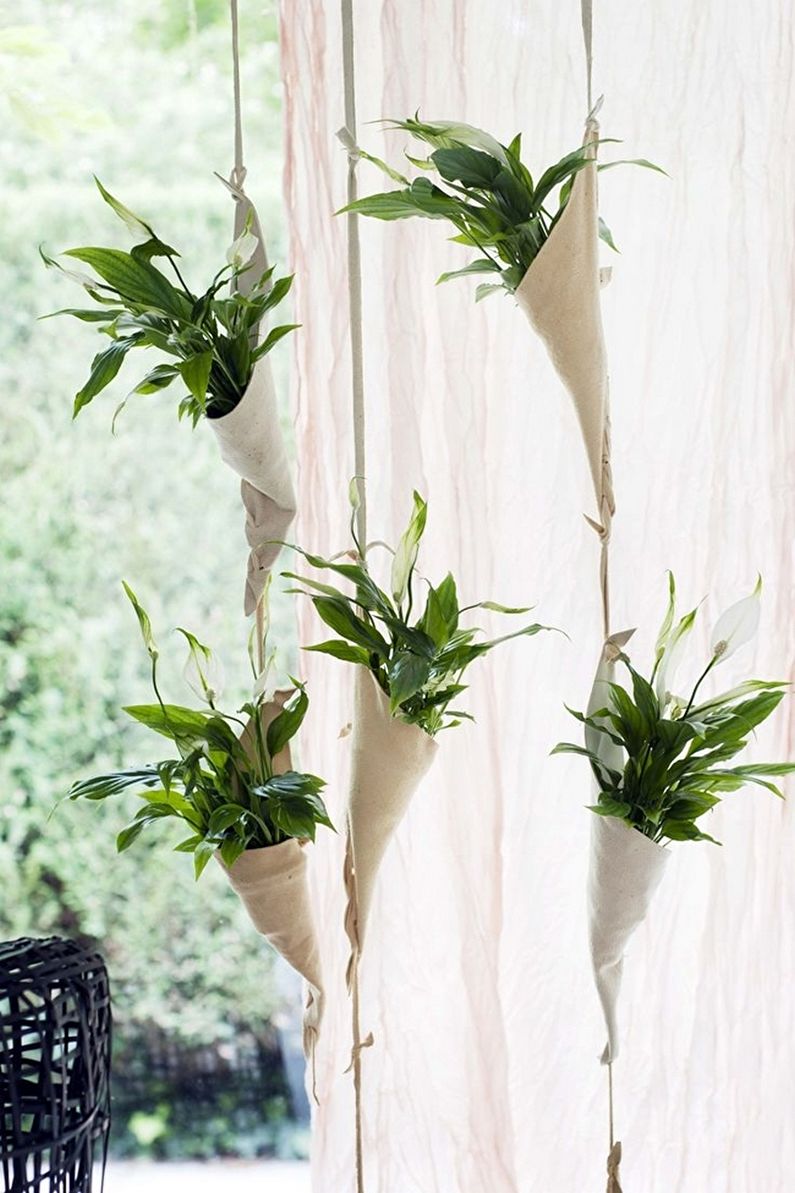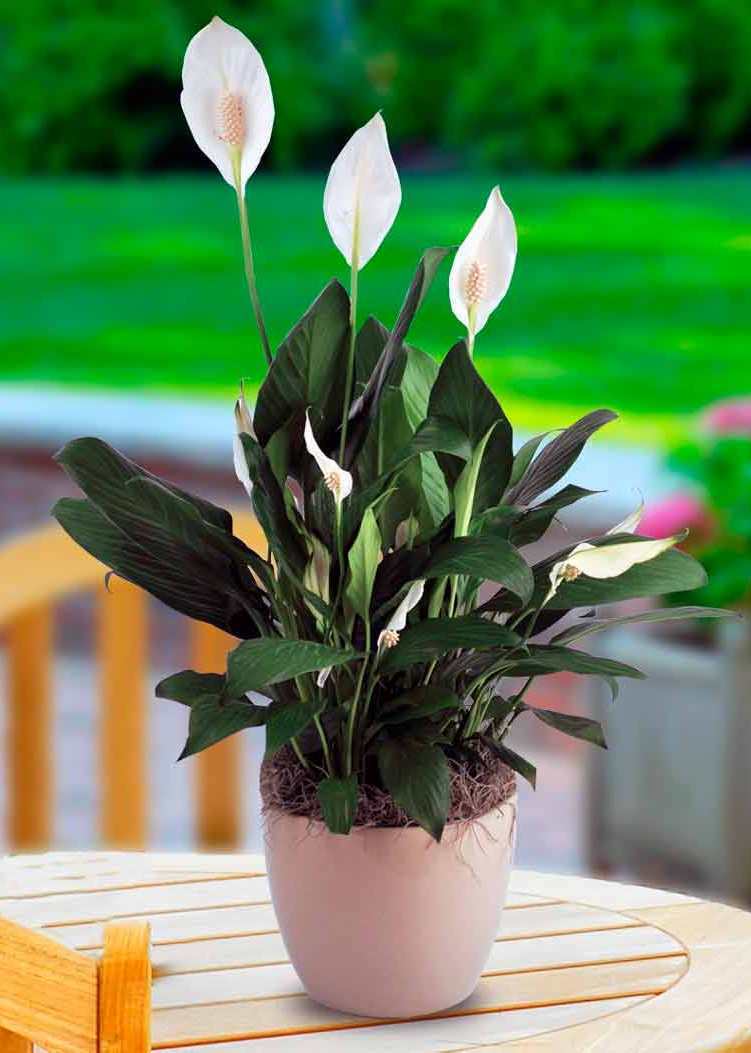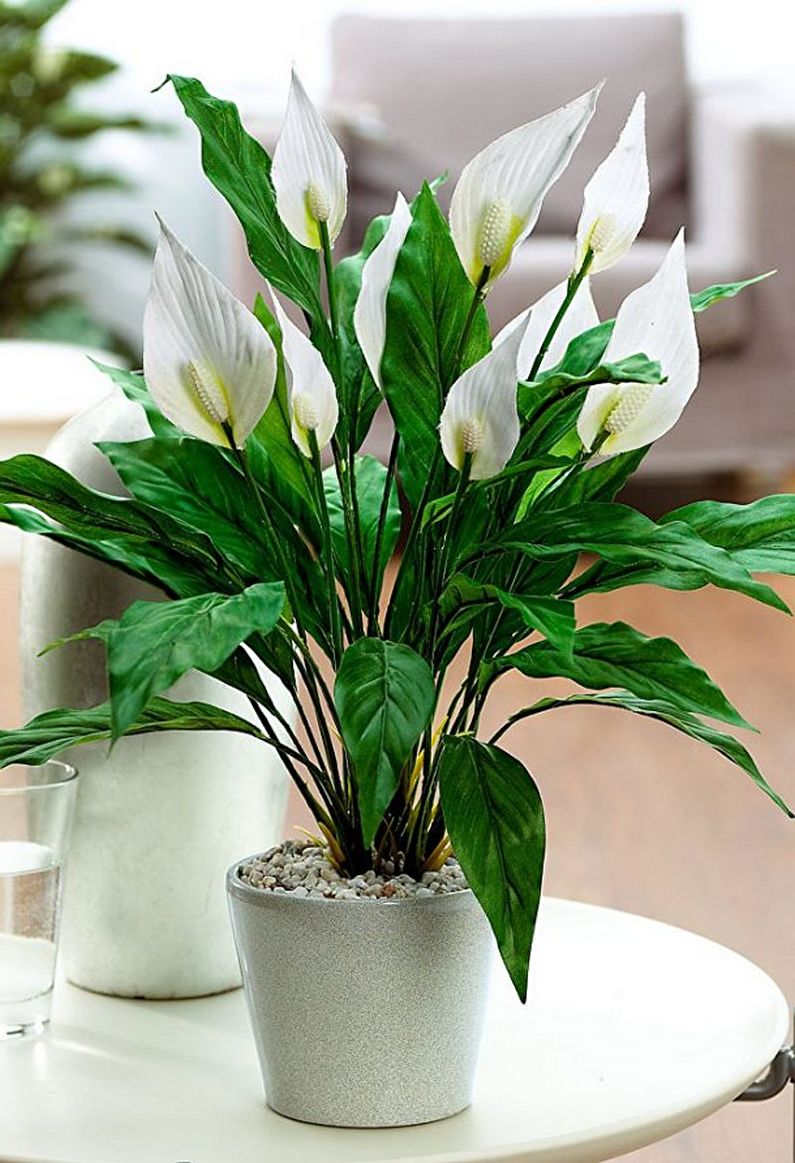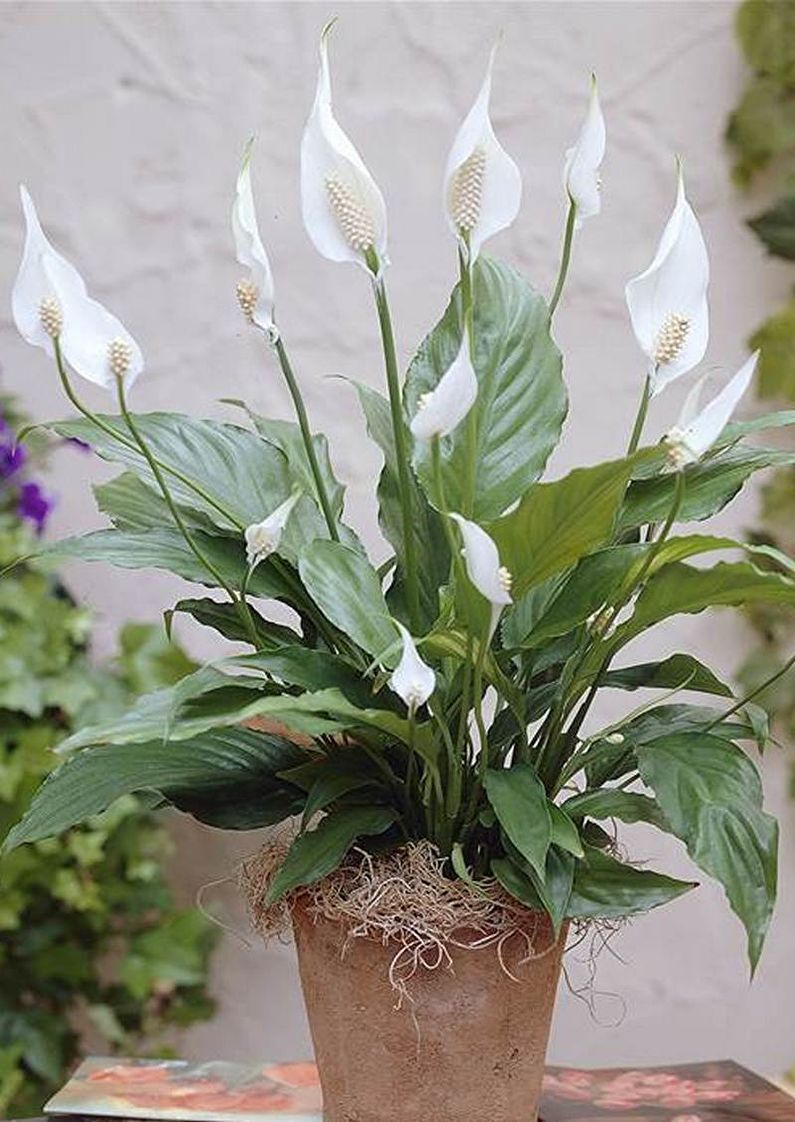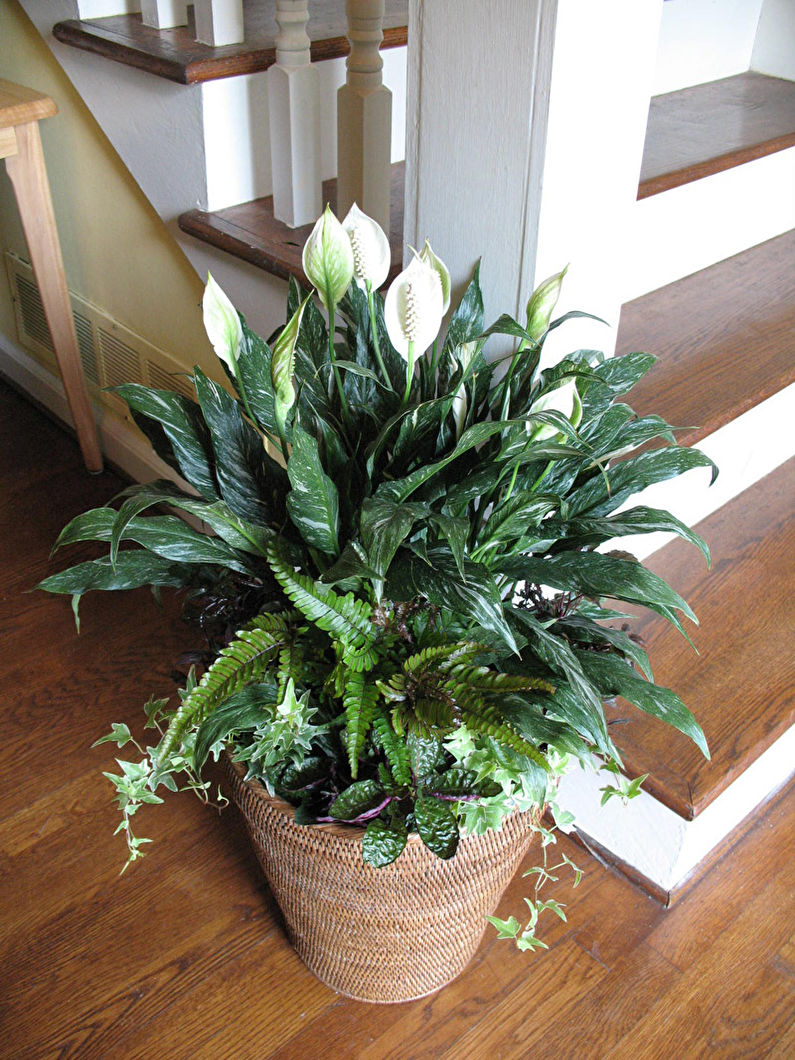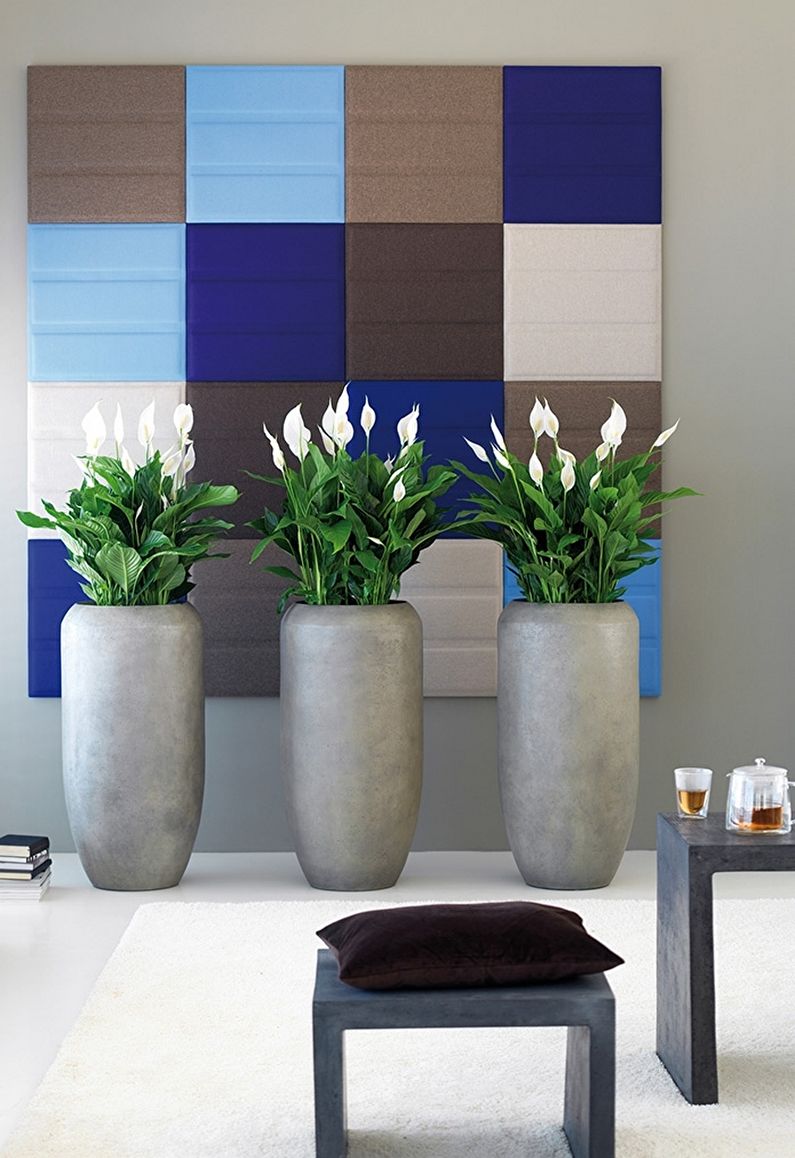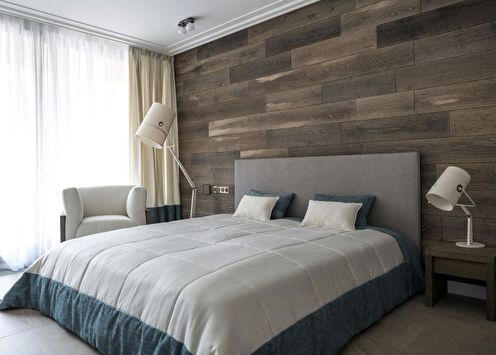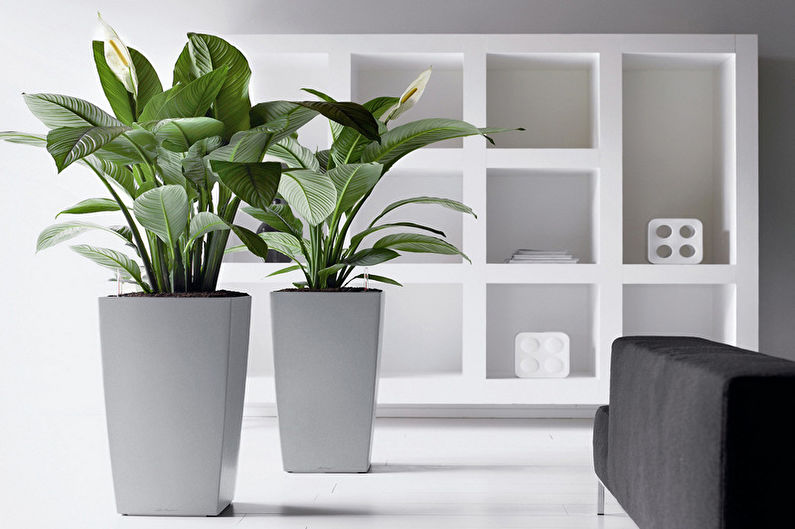
The name Spathiphyllum comes from the Greek words spathe - bedspread and phyllon - sheet. People attribute this plant a magical ability to attract love into the house, which is probably why it is often given to unmarried girls and ladies who want to arrange a personal life. Spathiphyllum, which is also called “female happiness”, “flower of love” or “white sail”, is quite unpretentious in care and grows well in normal room conditions, decorating the interior with a lush bouquet of leaves and unusual-looking inflorescences.
Description and types of spathiphyllum
Like most representatives of the Aronnikov family, spathiphyllum comes from tropical and subequatorial latitudes. Its natural habitat is the moist forests of Latin America, Indonesia, New Guinea, and the Philippines. There, evergreen thickets prevail in the marshland, on the banks of rivers and streams.
Spathiphyllum is characterized by rather large lanceolate leaves with embossed veins. In the absence of a stem, they grow directly from the soil, releasing many lateral shoots. From time to time, thin inflorescences-cobs, covered by one large petal, rise from a dark green outlet. By its shape, the “veil” copies leaves, but differs from them in a more delicate texture and color. The most common shade is white, although as a result of selection or the introduction of dyes, bright red, pink, and yellow varieties may appear.
In total, 50 species of plants from the genus Spathiphyllum are classified, which, in turn, are divided into five sections. Popular varieties include canniferous spathiphyllum, profusely flowering spathiphyllum, Humboldt spathiphyllum, adorable spathiphyllum, spoon-shaped spathiphyllum, Schlechter spathiphyllum. Amateur growers prefer low indoor varieties.
Spathiphyllum profusely flowering
It compares favorably with its counterparts by a long flowering period and a relatively large number of buds. With proper care, white “flags” will adorn the plant year-round.
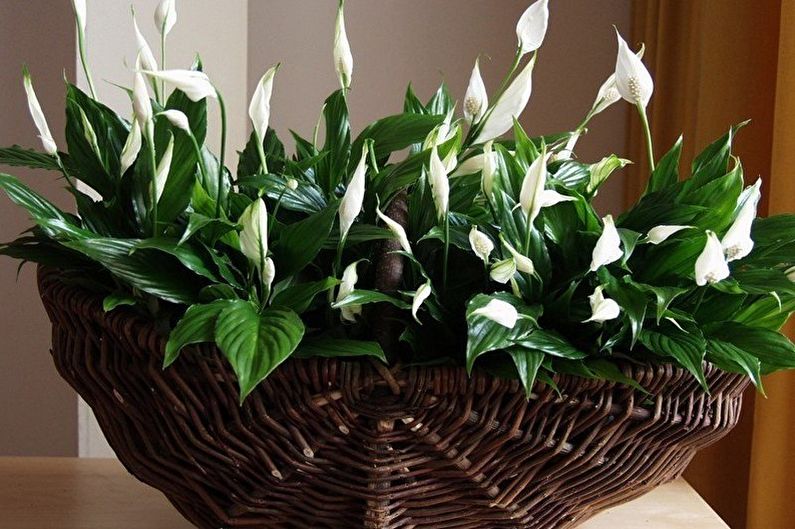
Spathiphyllum adorable
It boasts large leaves (about 10 cm wide and up to 25 cm long) with a nice matte texture. Its flower stalk is not snow-white, but greenish, and after withering the ears in the ‘bedspread’, even more chloroplasts are synthesized.
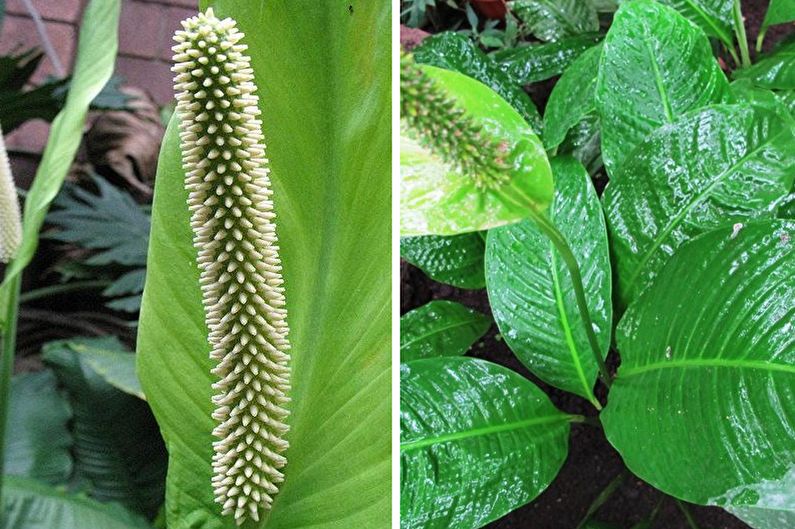
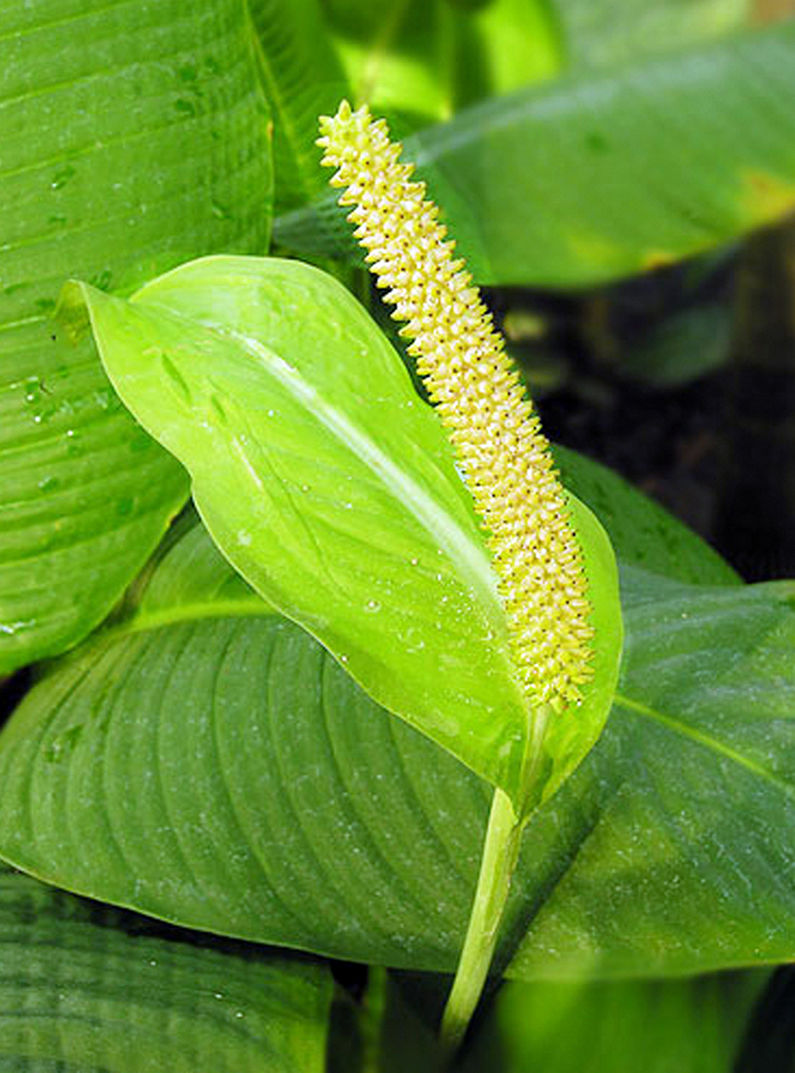
Spathiphyllum Picasso
Appreciated due to the unusual coloring of the sheets. In one plant, they can shimmer with beautiful wide strokes - cream-white, light green, dark green, brown. This variety in the home greenhouse looks very picturesque, even at a time when there are no blossoming flowers on it.
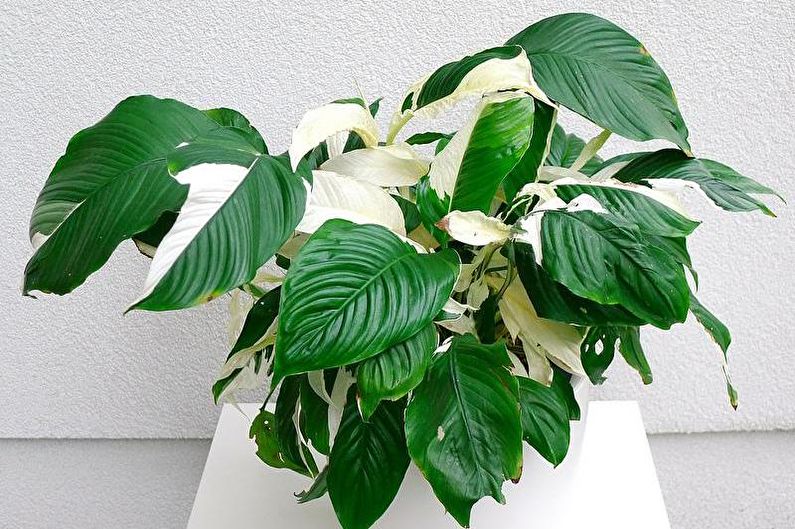
Spathiphyllum dominoes
It also has variegated colored leaves, but light and dark veins alternate in them more often than in Picasso, and are more symmetrical. On a two-color background, the white petals of the “bedspread” are not as contrasting as on a plain one, therefore the fact of flowering almost does not affect the decorativeness of this species.
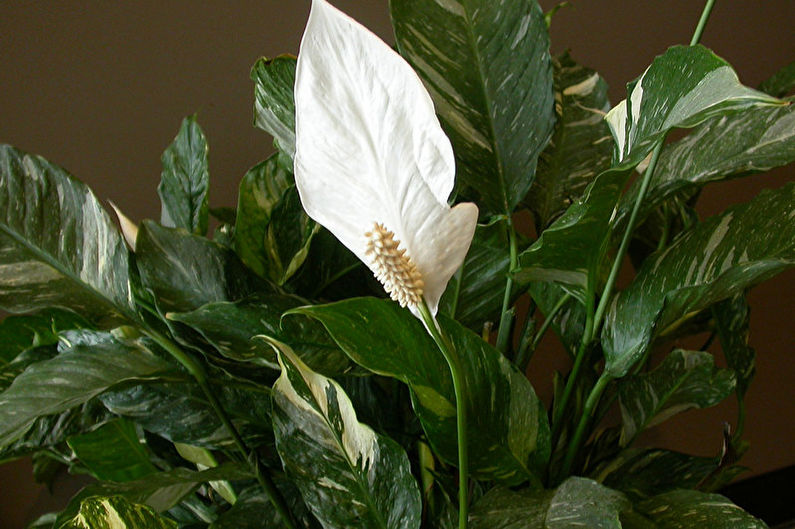

Spathiphyllum Sensation
One of the largest indoor varieties, reaching up to 1.5 m in height. Its leaves are dark green, with a length of 40 to 80 cm, and the flowers are large and durable. Such a grassy “bush” will help create an atmosphere of the tropics in the interior, in addition, it perfectly purifies the air, turning carbon dioxide into oxygen.
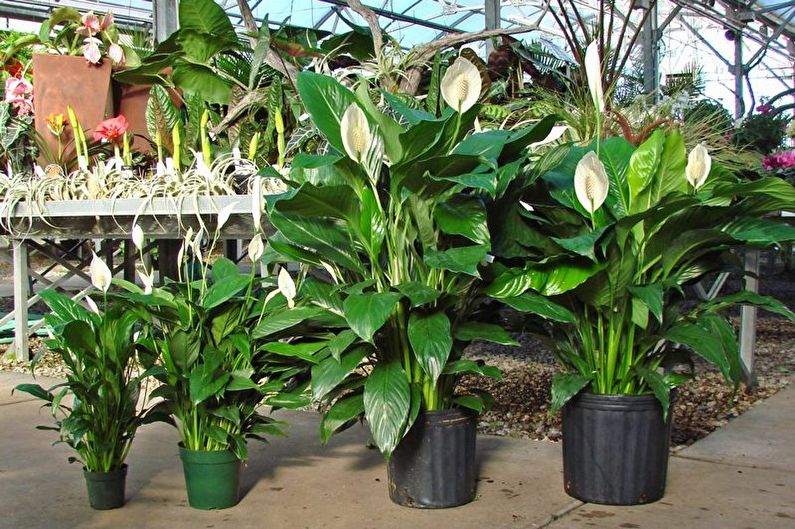
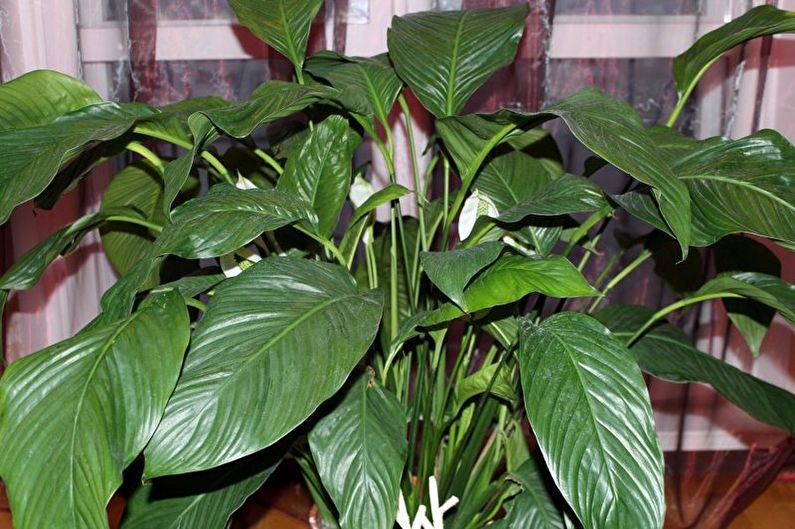
Spathiphyllum Care
Buying spathiphyllum in a flower shop, you don’t have to worry about whether an exotic guest will take root on a regular windowsill. This plant tolerates even adverse conditions, such as a weekly lack of watering, short daylight hours or a temperature lowered to + 10C.After the resumption of a suitable climate, the flower will return to normal development, but for the regular appearance of white “flags” and the splendor of evergreen leaves, he should ensure maximum comfort without the stressful situations described above.
Lighting
Slightly diffused sunlight is very important for representatives of the subtropical flora, so it is undesirable to put the pot with spathiphyllum in a dark corner. Southeast and southwest window sills, closed loggias or verandas are much more suitable for him.
Lack of sun leads to the depletion of leaves and stop flowering, but the scorching rays affect the plant destructively. It is not necessary to illuminate the “white sailing ship” - in the autumn-winter period it simply slows down the growth processes, reducing the need for photosynthesis.

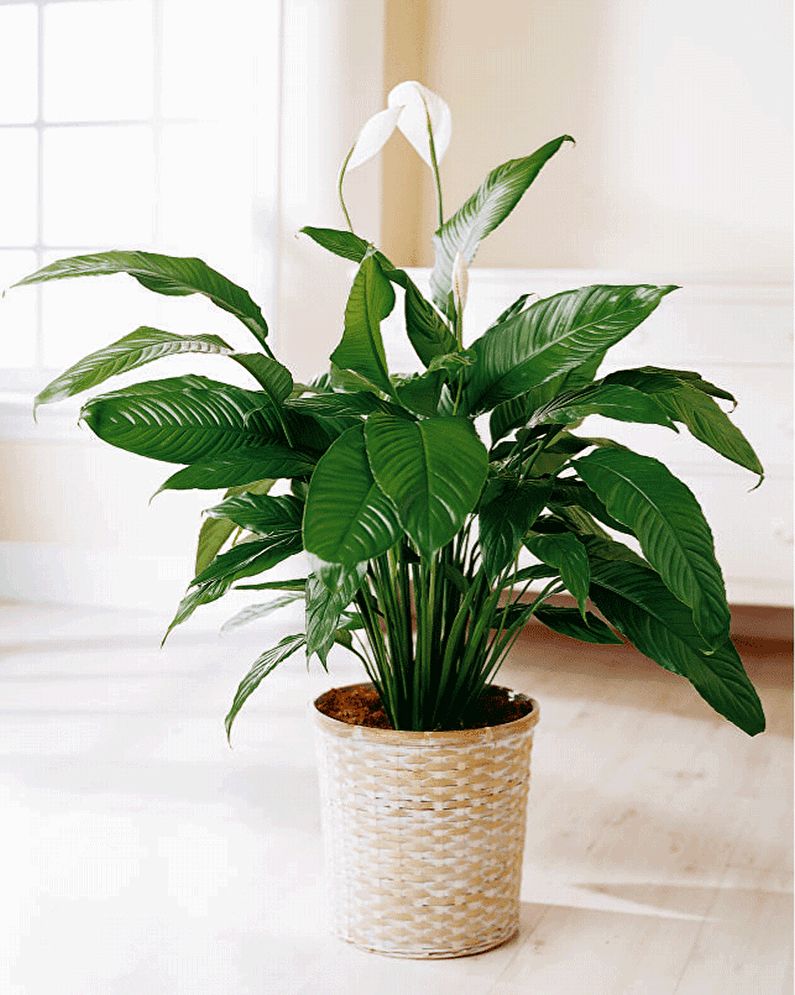
Watering
Constant humidity of the soil and air is one of the most important conditions for growing spathiphyllum. It should be watered generously, as the topsoil dries out, leaving a little water on the pallet. It also helps to spray the leaves from the spray bottle. The liquid should be at room temperature, settled. Do not allow excessive watering in cold conditions - if in winter the room does not warm up to comfortable values, it is better to leave the soil half dry.
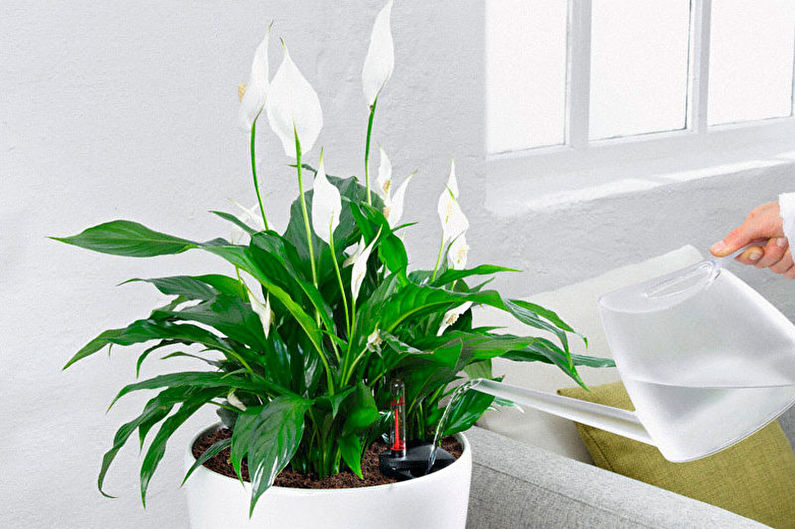
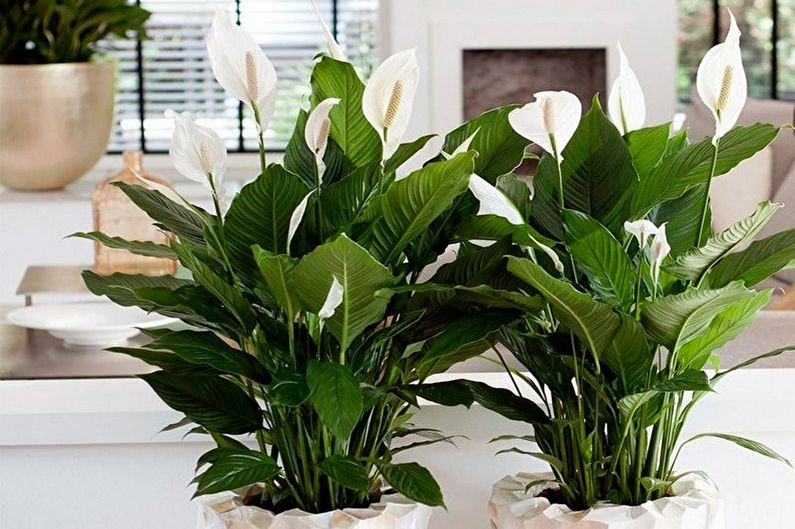
Temperature
In order for spathiphyllum to grow well and bloom profusely, it is necessary to maintain a warm climate in the room where it stands. The optimal indicators are considered to be + 22 ... + 28C, in winter the line should not fall below + 15C, but if possible it is better to pick up the flower in a more comfortable place. It is also worth noting that “female happiness” does not respond well to drafts, so do not leave it near an open window.
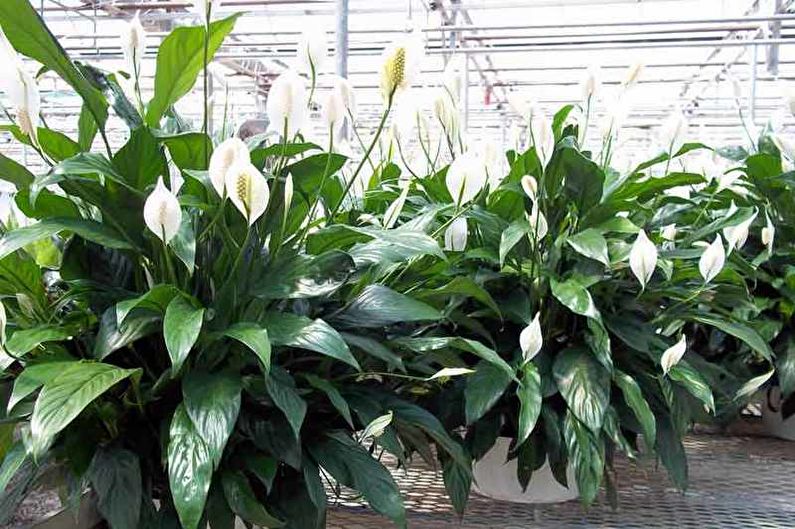
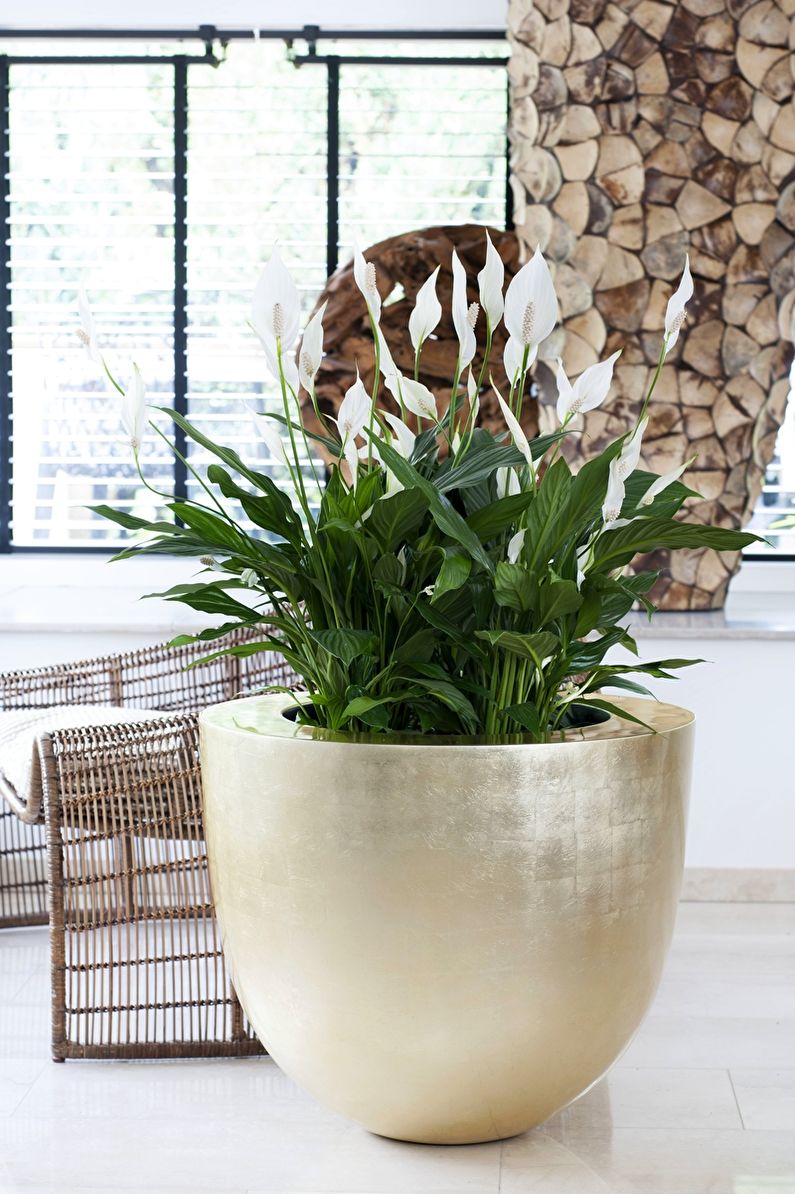
Fertilizers
The time of active development in spathiphyllum lasts from March to September. This period accounts for the massive growth of new leaves and the regular (ideally year-round) appearance of flowers. To stimulate vegetative processes, a plant is watered every 1–2 weeks with the addition of a complex mineral product containing nitrogen, phosphorus and potassium. It is best to purchase a ready-made fertilizer for flowering plants and apply it following the instructions. Spathiphyllum also perceives organic fertilizing quite well - for this, a little mullein or humus can be mixed into the ground.
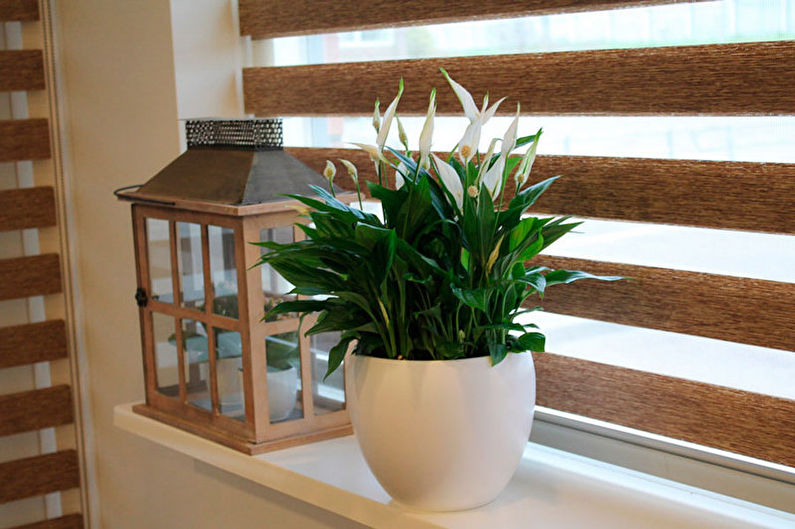
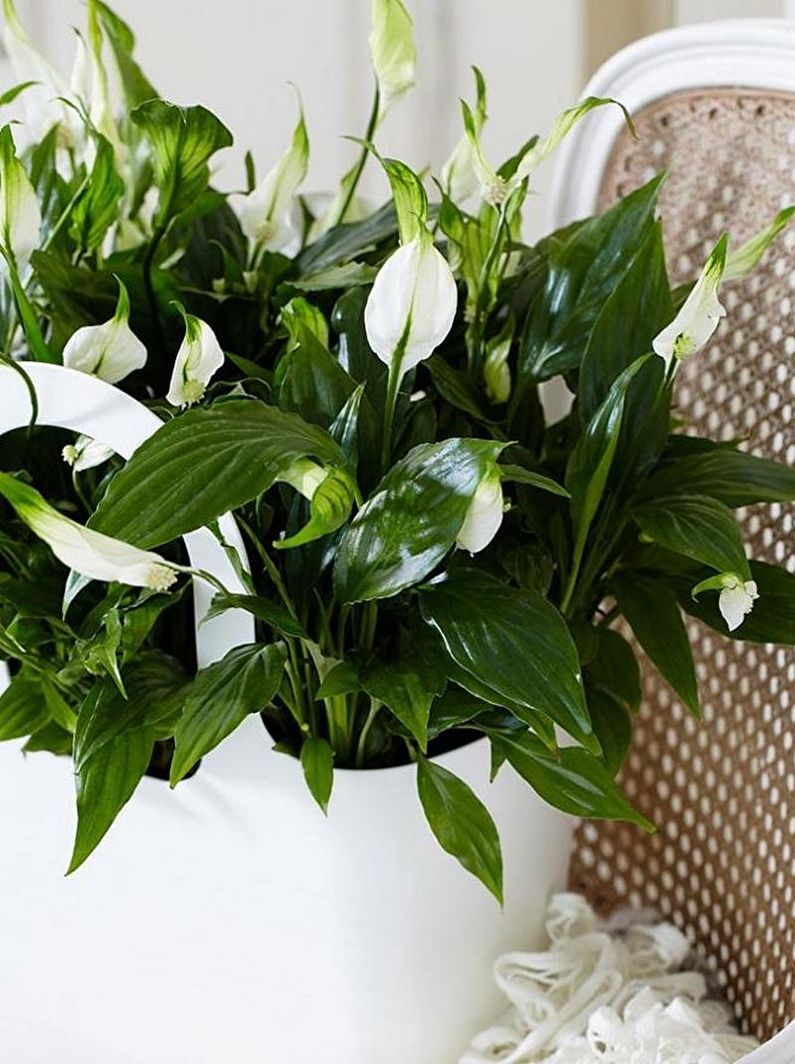
Reproduction and transplantation of spathiphyllum
As a general rule, a bush of spathiphyllum bought or donated is first left in the transport pot for 2-3 weeks to adapt to new conditions, regularly watering it. Then you need to find a not too large capacity - otherwise all the forces will go to the growth of roots and flowering will stop for a long time.
The transplantation process looks something like this: drainage (small pebbles, broken eggshells, perlite) is laid out in a low layer on the bottom so that excess water can drain there. Then add a little soil mixture, gently shake the roots from the previous soil, deepen them into a new pot and fill it with the remaining soil, slightly tamping. After this, the plant is generously watered with slightly warm water.
The soil for spathiphyllum must be very loose and porous. The best option is a leafy sod mixture with the addition of peat or coconut substrate in equal proportions. The earth can be additionally enriched with sedimented humus 3-4 years ago - organic matter will nourish the plant, making it lush and healthy.
When the leaves of the "white sailboat" fill a large part of the container, they are planted in new pots. To do this, young shoots on the sides are separated along with the roots (can be torn off or cut with a knife, scissors) and re-planted in suitable soil. This method is actually the only option for the propagation of spathiphyllum, which is used by flower growers.
If you grow this culture from seeds, then flowers from new sprouts will have to wait at least 4 years.In this case, only freshly harvested seeds should be used. They are immediately sown in warm and very moist soil under a layer of mulch that prevents drying of the upper part of the soil, covered with a film or glass and left until emergence in the sun at a temperature of + 23 ... + 26C. Then support the conditions usual for seedlings of thermophilic plants.
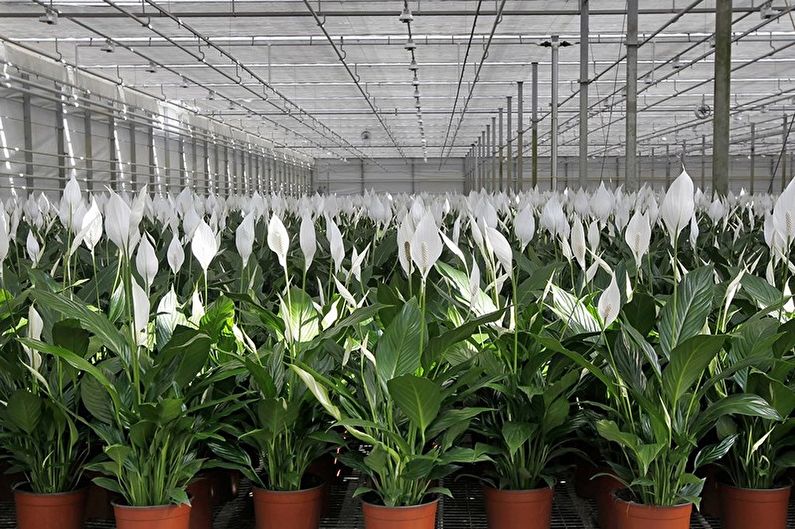
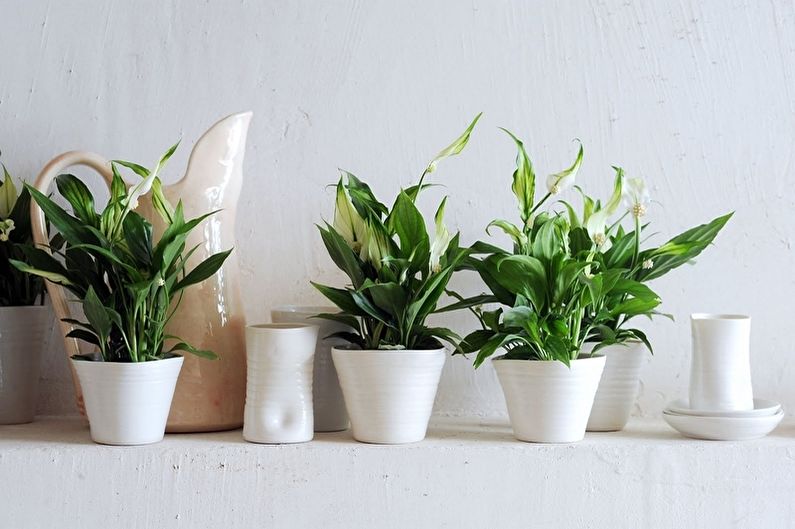
Spathiphyllum - photo
This plant will fit perfectly into the interior of your apartment or house, it will look great in the garden or on the veranda. For those who are looking for inspiration, we recommend that before you start choosing a flower and growing, take a look at our selection of photographs of spathiphyllums. Enjoy your viewing!
